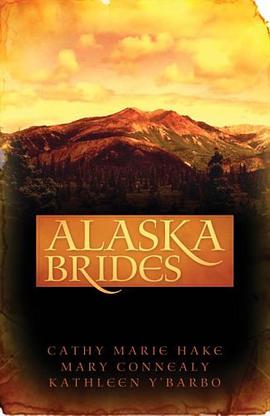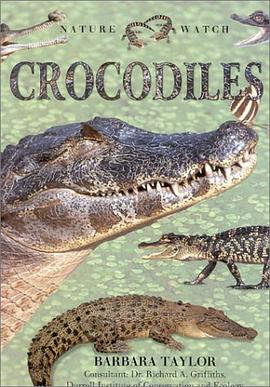

具體描述
'...visually stunning and mentally stimulating' - "Scientific American". 'the author of "What Painting Is" (1998) has written a fascinating new book filled with gorgeous illustrations that would inspire us 'to learn to see anything.' It's a tall order, to be sure, but one that the author pulls off admirably!. "How to Use Your Eyes" is a wondrous visual tour that Elkins hopes will help us 'learn to use our eyes more concertedly until the details of the world slowly reveal themselves.' Readers will be inspired to stop and smell - nay, see - the roses' - "Booklist".'Elkins invites his readers to extend perception beyond narrow specialties to see meaning in the mundane. He is ever curious, his mind seemingly in overdrive' - "Chicago Tribune Magazine". 'In that fascinating zone where creative imagination and scientific observation meet, Elkins shines a conceptual flashlight, aiming to illuminate in 32 short chapters a fraction of what we are missing daily. He asks us to use our eyes and our minds differently, to see the world as few of us bother to see it because we rarely make the effort' - "Library Journal".Grass, the night sky, a postage stamp, a crack in the sidewalk, a shoulder are ordinary objects of everyday life. But when we look at them - really look at them - what do we see? In the tradition of John Berger's bestselling "Ways of Seeing", James Elkins' "How to Use your Eyes" invites us to look at - and maybe see for the first time - the world around us, with breathtaking results. Here are the common artifacts of life, often misunderstood and largely ignored, brought into striking focus. A butterfly's wing pattern encodes its identity. A cloudless sky yields a precise sequence of colors at sunset. A bridge reveals the relationship of a population with its landscape. With the discerning eye of a painter and the zeal of a detective, Elkins also explores complicated things like mandalas, the periodic table, or a hieroglyph, remaking the world into a treasure box of observations - eccentric, ordinary, marvelous. "How to Use Your Eyes" will transform your view of nature and the mind.
著者簡介
詹姆斯.埃爾金斯,美國芝加哥美術學院美術史論與批評戲主任,愛爾蘭科剋大學學院美術史係主任,著有《繪畫與淚水》、《身體的圖象:痛苦與變形》、《圖象之城》、《何為繪畫》、《透視詩學》、《對象的反視:論看的本質》、《我們的圖象為什麼會令人迷惑不解》、《為什麼藝術是不能教的?》、《批評怎麼瞭?》、《藝術的種種故事》、《視覺研究:一種懷疑性的導論》以及《視覺品味-如何用你的眼睛》
圖書目錄
讀後感
偶然在书店里闲逛,发现了这本书。本来我就对这类书籍挺感兴趣,最近有在研究视觉素养培养的问题,所以就买了一本回来。 这是一本挺有趣的书,可以作为消遣来翻翻,也许作者的理解和你的不同,那又怎么样,他毕竟向你介绍了很多你平常不注意的细节。 作者的确是个很有观察力的...
評分我们有多人知道眼睛需要如何的去使用它的饿功能,又有多少知道人知道你也可以象哥伦布发现新世界一样发现新的知识。
評分 評分首先,承认我不是艺术专业的,不是学美术的。看这本儿书我并不是以一个专业的眼光去看的。而这本儿书似乎并不要求专业的读者群。 那么以我这么一个非专业的视角来看,这本儿书本该比较实用的书却并不实用。在我看来,也不是特别有趣。 书里尽是些令人头疼的图像和与其...
評分偶然在书店里闲逛,发现了这本书。本来我就对这类书籍挺感兴趣,最近有在研究视觉素养培养的问题,所以就买了一本回来。 这是一本挺有趣的书,可以作为消遣来翻翻,也许作者的理解和你的不同,那又怎么样,他毕竟向你介绍了很多你平常不注意的细节。 作者的确是个很有观察力的...
用戶評價
M1上學期text seminar text,導師對這個作者蜜汁喜愛
评分M1上學期text seminar text,導師對這個作者蜜汁喜愛
评分M1上學期text seminar text,導師對這個作者蜜汁喜愛
评分M1上學期text seminar text,導師對這個作者蜜汁喜愛
评分M1上學期text seminar text,導師對這個作者蜜汁喜愛
相關圖書
本站所有內容均為互聯網搜索引擎提供的公開搜索信息,本站不存儲任何數據與內容,任何內容與數據均與本站無關,如有需要請聯繫相關搜索引擎包括但不限於百度,google,bing,sogou 等
© 2025 book.quotespace.org All Rights Reserved. 小美書屋 版权所有




















